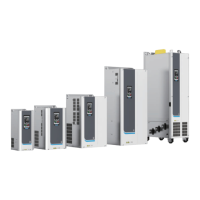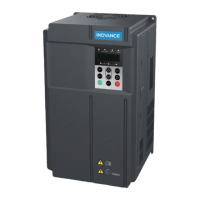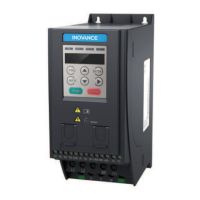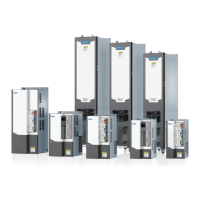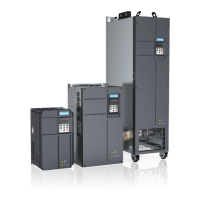Commissioning Tools
‑33‑
Table 1–7 Motor parameters
Pa
rame
ter
Code
Parame
ter Name
Default Value Range
Description Set
Value
F1‑00 Motor
type
0 0: Common
asynchronous
motor
1: Variable
frequency
asynchronous
motor
2: Permanent
magnet
synchronous
motor
3: Reluctance
motor without
permanent
magnet
4:
Electromagnet
ic coil
A variable frequency motor can
adjust its frequency and speed
according to the load. When the
voltage is low, the variable
frequency motor can reduce the
frequency for a reliable start.
When the load is light, it can
reduce the frequency, speed, and
current to save electric energy.
A common asynchronous motor
is suitable for applications with
normal voltage but often full
load. It is designed based on
constant frequency and constant
voltage. Therefore, it may not
meet all the frequency and speed
control requirements.
The reluctance motor is a
synchronous motor without
permanent magnet, whose
torque output is purely from the
magnetic reluctance generated
from q/d‑axis inductance.
0
F1‑01
Rated
motor
power
Model
depend
ent
0.1 kW to
1000.0 kW
The rated motor power indicates
the axis output power of the
motor working in rated
conditions. Select a motor with a
proper power rating on the
premise that the motor can meet
the requirements of mechanical
load. Take the motor heat
dissipation, allowable overload
capacity, and starting capacity
into account.
3.7
F1‑02
Rated
motor
voltage
Model
depend
ent
1 V to 2000 V
The rated motor voltage
indicates the voltage of the
motor during normal operation,
which usually refers to the line
voltage.
0380

